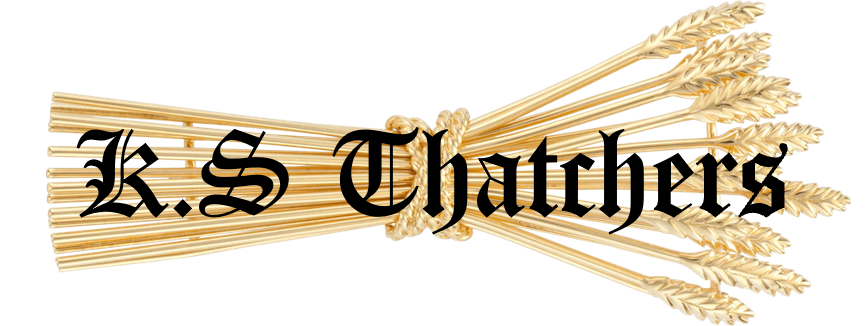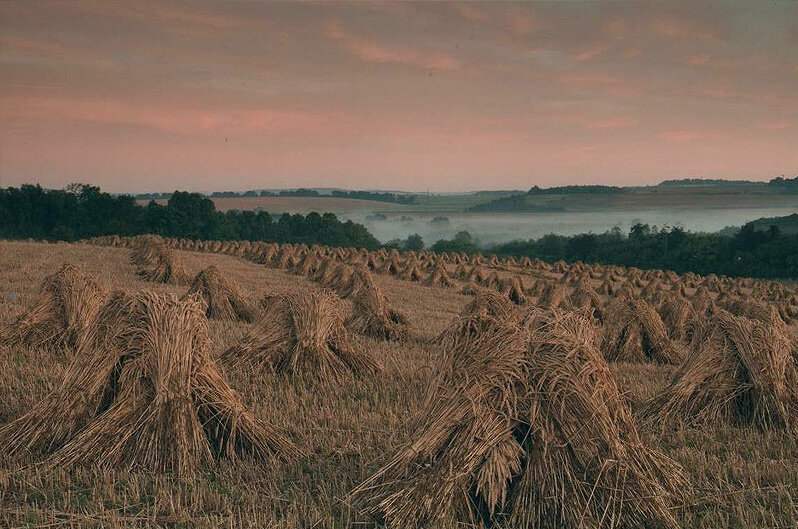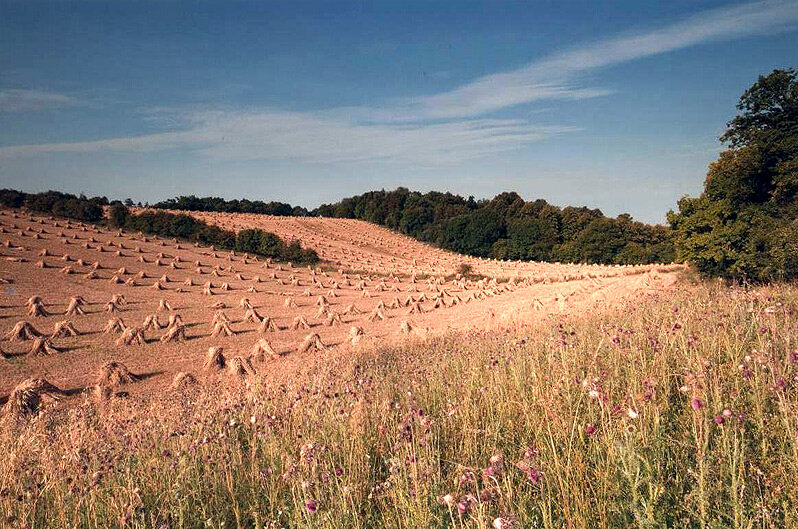“The premature failure of thatched roofs is a direct result of poor production methods, the use of artificial fertilisers and mass produced materials.”
The life expectancy of a KS Thatchers Wheat Straw roof would be between 25 and 35 years.
KS Thatchers produce what is arguably the best thatching material, including long straw and water reed (or Norfolk Reed) this country has ever seen, right here on our own farm in Test Valley, Hampshire. We monitor the process from start to finish. Only natural organic fertilisers are used and we spare no effort in ensuring that the quality is as high as it is possible for a natural product to be.
To produce wheat straw of this calibre, it is necessary to begin with the soil. Before we even sow the wheat, our fields are grazed for four years, alternating each year between grass and clover. The old term "grow behind sheep" means rotating the ground between grazing and crops to provide the optimum natural quality when harvesting.
The Best Thatching Materials in Hampshire
One would think that after four years of preparation for every field, we would be impatient to sow the wheat straight into the soil … But no.
The first crop sown is mustard, which, once it has grown, is ploughed into the soil. This is an essential step that gets rid of the 'biddy bugs' - wireworm, daddy-long-legs - that can cause crops to fail or become weak due to their larvae being present in the soil. The mustard crop effectively removes these while at the same time providing even more nutrients to the soil that has been enriched over the previous four years.
Only then do we sow the wheat - a special, traditional, long-strawed variety grown for the stalk, not the ear. Is this the final product that goes on your roof? Again no. The first growth is grazed off by sheep, which strengthens the straw, and 'waxes' each stem of straw which gives it extra resilience. This centuries-old method not only provides a good feed for the sheep, but also strengthens the final product. It also means that instead of growing to shoulder height as would otherwise be the case, it instead grows slightly shorter to just above waist height and therefore stronger.
The straw is finally harvested during July - earlier than most other harvests - using traditional methods to ensure the straw is in prime condition.
Our aim, and indeed our achievement, is to produce thatching material of durability and excellence of quality, even at the expense of quantity By taking our time using the natural rhythm of the seasons and employing methods tried and tested over generations we have confidence that our thatch work will last and give pleasure for many years.
If you have any questions or if you would like a free estimate to thatch your property in the finest materials this country has ever produced, please do get in touch - we'll be happy to help you!
“Please pass on my thanks to all your boys for lovely work – the summerhouse looks fantastic.”





